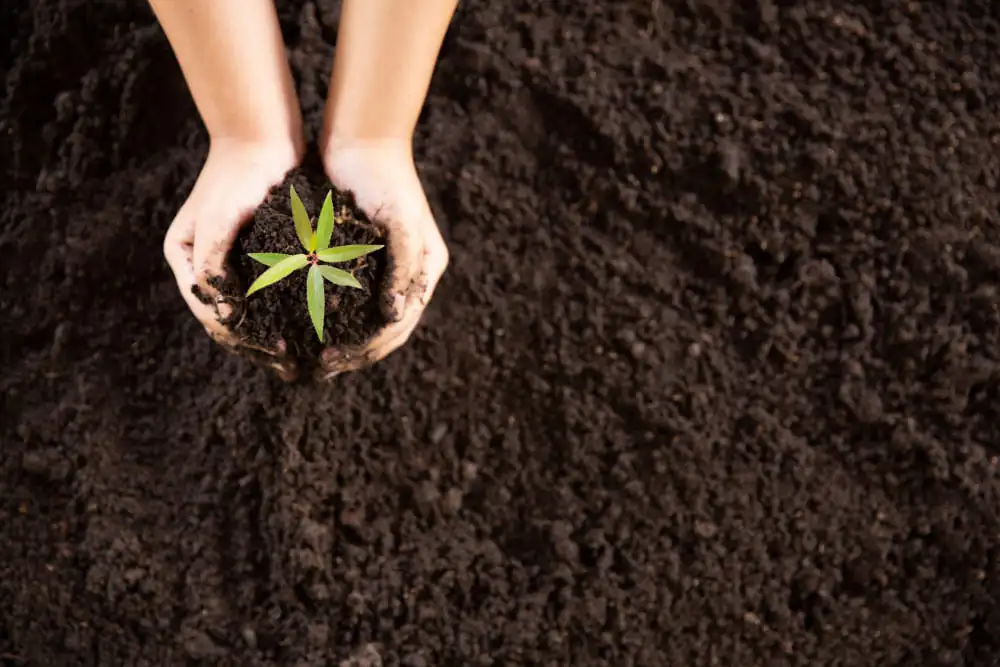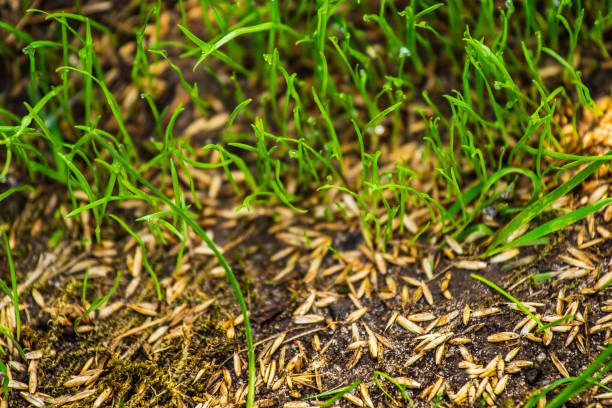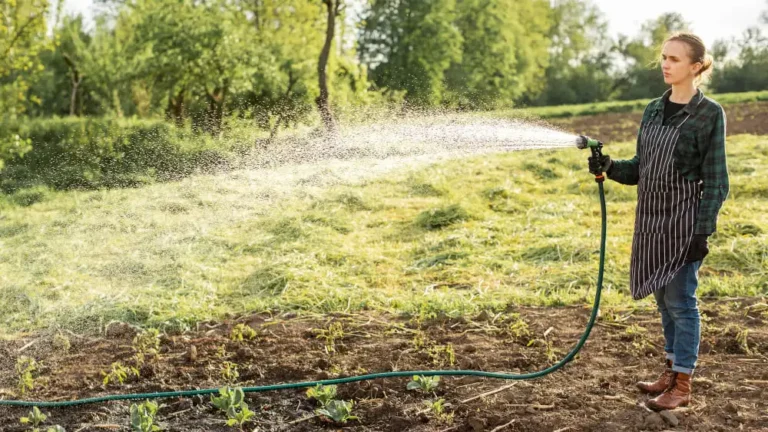Top Soil: Everything You Need to Know
Did you know that beneath our feet lies a hidden treasure? It’s not gold or diamonds, but something equally valuable: top soil. Whether you’re a seasoned gardener or just someone who enjoys a lush lawn, understanding top soil is essential. So, let’s dig in (pun intended) and explore the dirt on top soil!
Why Should You Care About Top Soil?
Top soil isn’t just dirt; it’s the lifeblood of our planet. It’s where plants find their footing, nutrients mingle, and tiny organisms throw the best garden parties. But lately, top soil has been slipping away faster than a toddler chasing an ice cream truck. 🌱
What’s the Deal with Erosion?
Picture this: Over the past 160 years, the Midwest has lost a whopping 57.6 billion metric tons of topsoil. That’s like Mother Earth sighing, “Oops, there goes Kansas!” And guess what? The rate of erosion is double what the USDA considers sustainable. If we don’t hit the brakes, future crop production might be as fruitful as a cactus at a water park.
How Can You Be a Soil Superhero?
Fear not! You don’t need a cape (or a green thumb) to save the soil. Stick around for our top tips on buying, spreading, and loving your top soil. Plus, we’ll spill the beans on the best brands and where to find this precious resource. 🌎
Ready to Get Your Hands Dirty?
Bookmark this blog, grab your gardening gloves, and let’s dive into the world of top soil. Because when it comes to growing food, flowers, or even funky-shaped carrots, healthy soil is the ultimate secret ingredient. Let’s nurture it, protect it, and watch our gardens bloom! 🌿🌼
Stay tuned for more soil-sational insights! 🌎🌱
Table of Contents
What is Top Soil? Understanding the Foundation of Healthy Landscapes
Top soil, often referred to as the “skin of the Earth,” plays a crucial role in supporting plant life, promoting healthy growth, and maintaining vibrant landscapes. Whether you’re a seasoned gardener or a homeowner looking to enhance your outdoor spaces, understanding top soil is essential. In this informative section, we’ll delve into the definition, uses, and composition of top soil.

I. Definition of Top Soil
Top soil is the uppermost layer of soil found on the Earth’s surface. It is the layer where most plant roots grow and thrive. This fertile layer is rich in organic matter, nutrients, and microorganisms, making it a vital component for successful gardening and landscaping.
Importance in Gardening and Landscaping
- Plant Growth: Top soil provides the necessary nutrients and support for plants to establish strong root systems. Without quality top soil, plants may struggle to grow and flourish.
- Water Retention: The structure of top soil allows it to retain moisture, preventing rapid evaporation and ensuring consistent hydration for plants.
- Nutrient Exchange: Top soil acts as a reservoir for essential nutrients like nitrogen, phosphorus, and potassium. These nutrients are crucial for plant health and productivity.
- Soil Structure: The texture and composition of top soil influence soil structure. Well-structured soil allows for proper aeration, drainage, and root penetration.
II. What is Top Soil Used For?
Top soil serves various purposes in gardening, landscaping, and outdoor projects:
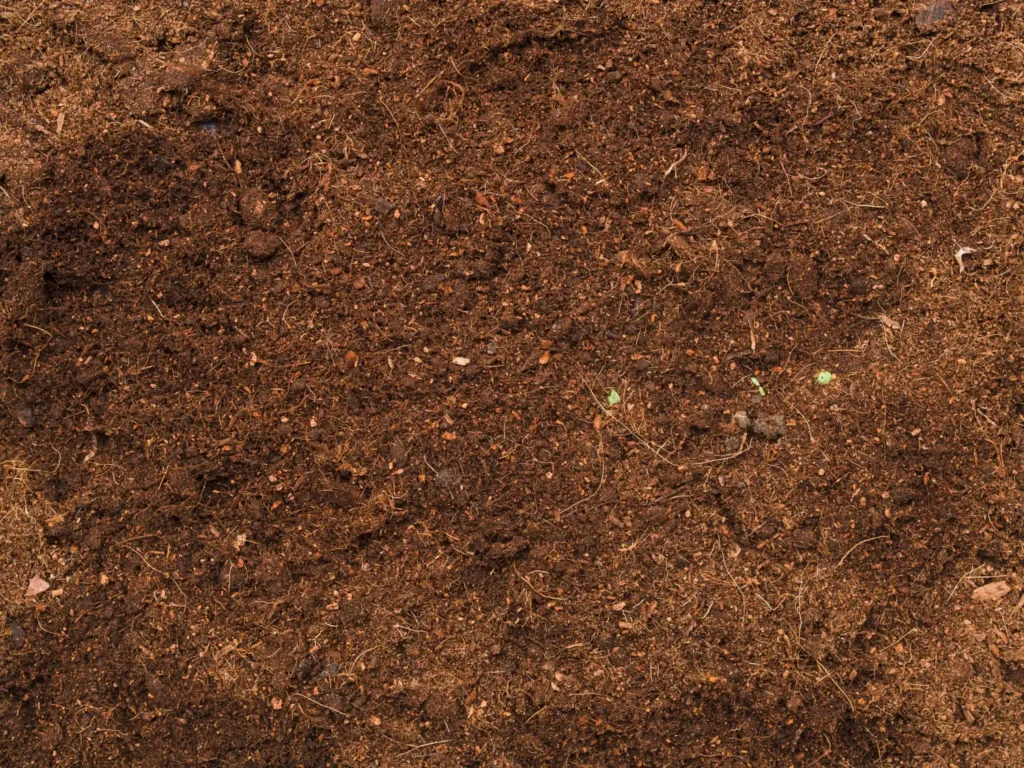
A. Lawn Establishment
- Seeding Lawns: When establishing a new lawn, spreading a layer of top soil over the seedbed provides an ideal environment for grass seed germination.
- Sod Installation: Before laying sod, preparing the soil with a layer of top soil ensures better root contact and faster establishment.
B. Gardens
- Raised Beds: Top soil is essential for filling raised garden beds. It provides a loose, nutrient-rich medium for growing vegetables, herbs, and flowers.
- Vegetable Gardens: Nutrient-dense top soil supports healthy vegetable growth, leading to better yields.
- General Gardening: Whether planting shrubs, perennials, or annuals, incorporating top soil improves soil quality and promotes robust plant growth.
C. Grass Seed Mixtures
- Germination Medium: Top soil serves as an excellent medium for mixing with grass seed. It provides the necessary nutrients and aeration for successful germination.
- Even Distribution: Applying top soil evenly over newly seeded areas ensures consistent coverage and encourages uniform grass growth.
D. Other Uses
- Potted Plants: When repotting indoor or outdoor plants, adding top soil to the container enhances soil structure and nutrient availability.
- Reptile Habitats: Top soil can be used as a substrate in reptile enclosures, mimicking their natural environment.
- Leveling Uneven Ground: Whether filling depressions or creating gentle slopes, top soil helps achieve a level surface.
III. What is Top Soil Made Of?
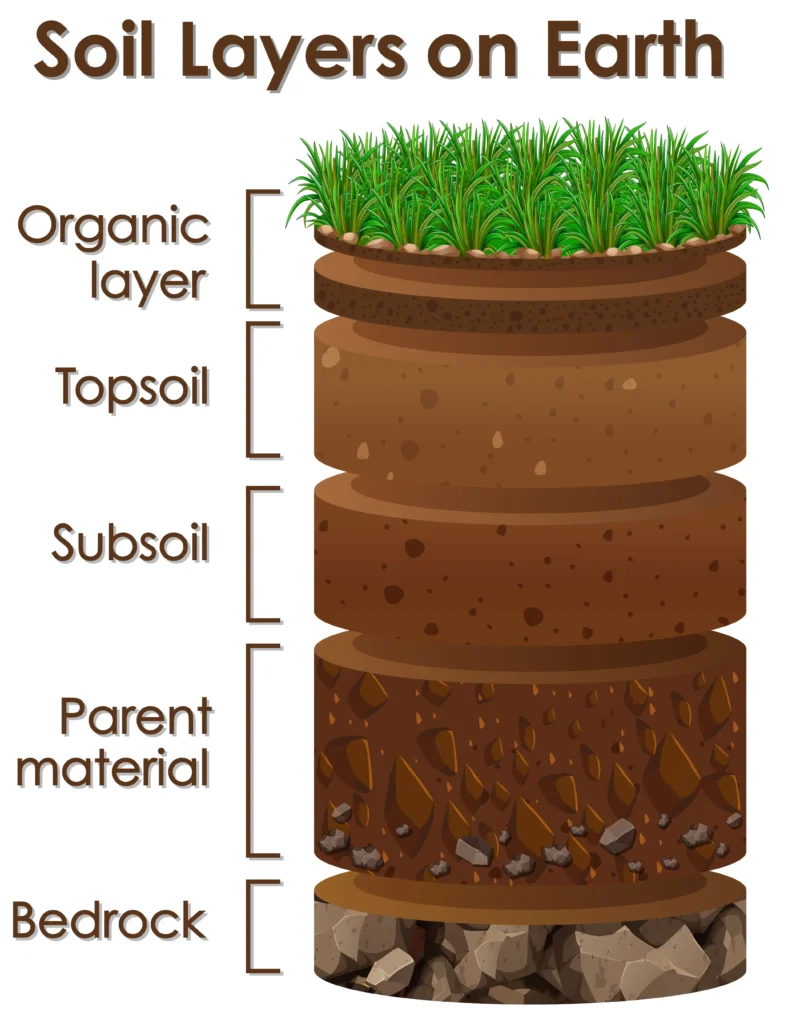
Top soil is a complex mixture of various components:
A. Organic Matter
- Decomposed Plant Material: Fallen leaves, grass clippings, and other organic debris contribute to the organic content of top soil.
- Humus: Fully decomposed organic matter that enriches the soil with nutrients and improves its structure.
B. Minerals
- Sand: Provides aeration and drainage.
- Silt: Enhances water retention.
- Clay: Contributes to soil structure and nutrient retention.
C. Nutrients
- Nitrogen (N), Phosphorus (P), and Potassium (K): Essential for plant growth and development.
- Micronutrients: Iron, zinc, manganese, and others play vital roles in plant health.
D. Microorganisms
- Bacteria, Fungi, and Protozoa: These microscopic organisms break down organic matter, releasing nutrients for plants.
In summary, top soil is the foundation upon which successful gardening and landscaping thrive. Its composition directly impacts plant health, water retention, and overall soil quality. By understanding what top soil is and how to use it effectively, you’ll be better equipped to create beautiful outdoor spaces and nurture flourishing plants. 🌱🌿
Top Soil vs. Garden Soil: Unraveling the Earth’s Layers
When it comes to nurturing plants, the soil you choose can make all the difference. Whether you’re a seasoned gardener or a novice with a green thumb, understanding the nuances between top soil, garden soil, and potting soil is essential. In this informative section, we’ll explore the characteristics, uses, and key differences among these soil types.
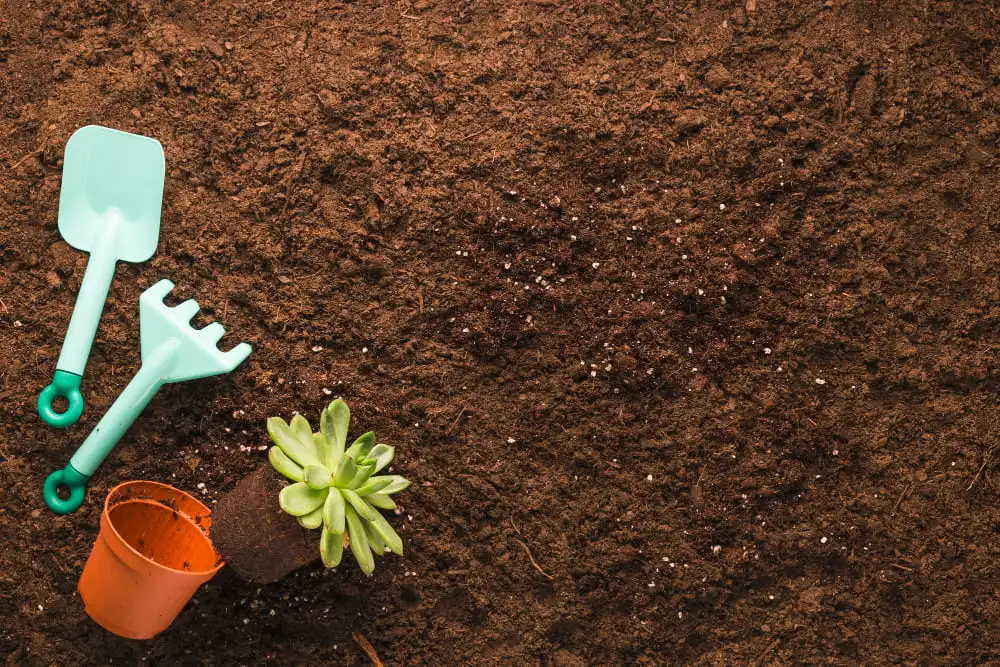
I. Top Soil vs. Garden Soil
A. Composition
- Top Soil:
- Definition: Top soil is the uppermost layer of soil found naturally in your yard or garden.
- Composition: It contains a mix of organic matter, minerals, and microorganisms.
- Origin: Typically sourced from the top 6 to 8 inches of the Earth’s surface.
- Purpose: Provides nutrients and supports plant growth.
- Garden Soil:
- Definition: Garden soil is a commercially prepared blend designed for gardening.
- Composition: Enriched with additional organic matter, nutrients, and sometimes amendments like perlite or vermiculite.
- Origin: Created by manufacturers to meet specific gardening needs.
- Purpose: Ideal for planting directly in garden beds or containers.
B. Texture
- Top Soil:
- Texture: Varies based on the local environment but tends to be a balanced mix of sand, silt, and clay.
- Drainage: Generally well-draining.
- Use: Suitable for leveling, filling, and improving existing soil.
- Garden Soil:
- Texture: Customized for optimal plant growth, often loamy or sandy.
- Drainage: Tailored to specific plant requirements.
- Use: Ready-to-use for planting flowers, vegetables, and shrubs.
C. Nutrient Content
- Top Soil:
- Nutrients: Contains basic nutrients but may lack specific elements.
- Fertility: May need supplementation for optimal plant health.
- Garden Soil:
- Nutrients: Enriched with essential nutrients for vigorous plant growth.
- Fertility: Designed to support plants without additional fertilization.
D. Purpose
- Top Soil:
- Application: Used as a foundation layer for landscaping projects.
- Mixing: Often blended with other soil types to improve overall quality.
- Garden Soil:
- Application: Ready-to-use for planting directly in garden beds.
- Versatility: Suitable for both outdoor and container gardening.
II. Top Soil vs. Potting Soil
A. Composition
- Top Soil:
- Purpose: Primarily for landscaping and amending existing soil.
- Texture: Coarser and less refined.
- Nutrients: Basic nutrient content.
- Potting Soil:
- Purpose: Specifically for container gardening.
- Texture: Lighter, well-aerated, and fine.
- Nutrients: Enriched with nutrients and organic matter.
B. Drainage
- Top Soil:
- Drainage: Generally good drainage.
- Use: Suitable for outdoor planting.
- Potting Soil:
- Drainage: Excellent drainage to prevent waterlogged containers.
- Use: Essential for potted plants.
C. Sterility
- Top Soil:
- Microorganisms: Contains natural microorganisms.
- Weed Seeds: May contain weed seeds.
- Potting Soil:
- Microorganisms: Sterilized to prevent diseases.
- Weed Seeds: Weed-free.
III. Top Soil vs. Dirt
A. Top Soil:
- Definition: The fertile upper layer of soil.
- Purpose: Supports plant growth.
- Composition: Contains organic matter, minerals, and microorganisms.
- Texture: Varies based on location.
B. Dirt:
- Definition: Generic term for any soil.
- Purpose: Not specifically for plant growth.
- Composition: May lack nutrients and structure.
- Texture: Can be sandy, clayey, or rocky.
In summary, choose top soil for landscaping and garden soil for direct planting. Potting soil is a must for containers, while dirt is a catch-all term for any soil type. Understanding these distinctions will help you cultivate thriving gardens and lush landscapes. 🌱🌿
IV. Top Soil vs. Compost
A. Composition and Origins
- Top Soil:
- Definition: Top soil is the uppermost layer of soil found naturally in our environment.
- Composition: It consists of a blend of mineral particles (sand, silt, and clay), organic matter, and microorganisms.
- Origin: Typically sourced from the top 6 to 8 inches of the Earth’s surface.
- Purpose: Provides a foundation for plant growth by supplying nutrients and supporting root systems.
- Compost:
- Definition: Compost is a dark, crumbly material resulting from the decomposition of organic matter.
- Composition: Compost is entirely organic, made from kitchen scraps, yard waste, and other biodegradable materials.
- Origin: Created intentionally through controlled decomposition processes.
- Purpose: Enhances soil structure, enriches nutrients, and improves water retention.
B. Nutrient Content
- Top Soil:
- Nutrients: Contains basic nutrients but may lack specific elements.
- Fertility: May need supplementation for optimal plant health.
- Compost:
- Nutrients: Rich in essential nutrients (nitrogen, phosphorus, potassium) and micronutrients.
- Fertility: Boosts soil fertility and promotes vigorous plant growth.
C. Texture and Structure
- Top Soil:
- Texture: Varies based on local conditions but often balanced.
- Structure: Supports root penetration and drainage.
- Use: Suitable for leveling, filling, and improving existing soil.
- Compost:
- Texture: Crumbly and loose.
- Structure: Improves soil structure by enhancing aeration and water-holding capacity.
- Use: Mix with existing soil or use as a top dressing.
D. Application
- Top Soil:
- Landscaping: Used as a base layer for lawns, flower beds, and shrubs.
- Amending Soil: Blended with other soil types to enhance overall quality.
- Compost:
- Soil Enrichment: Incorporated into garden beds to improve soil health.
- Mulching: Applied as a protective layer around plants.
V. Top Soil vs. Mulch
A. Role of Top Soil
- Nutrient Supply:
- Top soil: Provides essential nutrients for plant growth.
- Mulch: Does not supply significant nutrients.
- Root Support:
- Top soil: Supports root systems and anchors plants.
- Mulch: Acts as a protective layer but does not offer structural support.
- Water Retention:
- Top soil: Retains moisture for plant uptake.
- Mulch: Helps conserve soil moisture by reducing evaporation.
B. Role of Mulch
- Weed Suppression:
- Mulch: Suppresses weed growth by blocking sunlight.
- Top soil: Does not directly suppress weeds.
- Temperature Regulation:
- Mulch: Insulates soil, moderating temperature fluctuations.
- Top soil: Lacks insulating properties.
- Erosion Control:
- Mulch: Prevents soil erosion by reducing water runoff.
- Top soil: Not specifically designed for erosion control.
Buying Top Soil: Where and How to Get the Best Quality
When it comes to creating a thriving garden or landscaping project, choosing the right top soil is crucial. Whether you’re a seasoned gardener or a first-time landscaper, understanding where and how to buy top soil ensures that your plants get the best start. In this comprehensive guide, we’ll explore the various options for purchasing top soil, from local stores to bulk suppliers.
I. Where to Buy Top Soil
A. Local Retail Stores
- Home Improvement Stores (Home Depot, Lowe’s, Menards, Walmart, etc.):
- These retail giants often carry bags of top soil suitable for small-scale projects.
- Convenient for homeowners and small garden beds.
- Check the product labels for quality and organic content.
- Garden Centers and Nurseries:
- Local garden centers and nurseries offer a variety of top soil options.
- You can find bagged or bulk top soil.
- Staff can provide advice on the best type for your specific needs.
- Consider supporting local businesses.
B. Bulk Suppliers
- Bulk Top Soil Delivery:
- Bulk suppliers deliver larger quantities of top soil directly to your location.
- Ideal for landscaping projects, large gardens, or filling raised beds.
- Check delivery fees and minimum order requirements.
- Verify the quality and source of the top soil.
- Organic Recycling Centers:
- Some recycling centers produce high-quality organic top soil.
- They may blend compost with native soil to create nutrient-rich options.
- Ask about testing and certifications.
- Consider environmental sustainability.
II. Factors to Consider When Buying Top Soil
- Soil Composition:
- Look for a balanced mix of sand, silt, and clay.
- Avoid top soil with excessive rocks, roots, or debris.
- Nutrient Content:
- Choose top soil rich in essential nutrients (nitrogen, phosphorus, potassium).
- Organic matter enhances fertility.
- pH Levels:
- Soil pH affects nutrient availability.
- Consider soil testing or ask suppliers about pH-adjusted top soil.
- Delivery Options:
- Bulk suppliers offer delivery services.
- Calculate the amount needed for your project.
- Compare delivery costs and availability.
Remember that quality top soil sets the foundation for healthy plants. Whether you’re planting flowers, vegetables, or trees, invest in the best soil to ensure your garden thrives. 🌱🌿
Top Soil Cost: Unveiling the Price Spectrum
When it comes to nurturing your garden or landscaping project, the cost of top soil plays a significant role. Let’s delve into the pricing considerations, price ranges, and budget-friendly options for acquiring this essential soil.
I. Pricing Considerations
- Supply and Demand:
- The principle of supply and demand influences top soil prices.
- Local availability affects cost variations.
- Location and Accessibility:
- Urban areas may have higher prices due to transportation costs.
- Rural locations might offer more affordable options.
- Soil Quality and Composition:
- High-quality top soil with optimal nutrient content tends to be pricier.
- Organic or specialty blends may cost more.
II. Price Ranges
- Average Cost:
- On average, topsoil prices range between $16 and $100 per cubic yard, including delivery.
- Urban locations, organic soil, or small quantities may increase the price.
- Bulk Delivery:
- A bulk truck load (10 to 15 cubic yards) costs $150 to $600 on average.
- Expect $15 to $50 per cubic yard for topsoil.
- Fill dirt costs $5 to $25 per cubic yard.
- Sand delivery is around $15 to $50 per cubic yard.
III. Price per Yard or Ton
- Yard Pricing:
- Topsoil prices vary from $10 to $50 per cubic yard.
- Bulk purchases from local garden stores offer cost savings.
- Ton Pricing:
- One cubic yard of topsoil weighs approximately 1080 pounds.
- Consider ton pricing if you need a specific weight.
IV. Budget-Friendly Options
- Local Waste Disposal:
- Check municipal composting programs for free or discounted compost.
- Combine compost with coconut coir or peat for optimal consistency.
- Bulk Purchase:
- Buy garden-grade soil in bulk from garden stores.
- Ensure it’s suitable for raised beds to avoid nutrient deficiencies.
- Hugelkultur Method:
- Fill lower layers of raised beds with organic material (tree limbs, branches, mulch).
- Minimize the amount of topsoil needed.
- Connect with Gardeners:
- Join local gardening forums.
- Find free or low-cost soil, mulch, or community-run compost.
Top Soil Delivery Options: A Comprehensive Guide
When it comes to topsoil delivery, understanding your options is crucial. Whether you’re landscaping, gardening, or filling in holes, the right delivery method matters. Let’s explore the various ways to get topsoil delivered to your doorstep.
I. Top Soil Delivery
- Bulk Delivery:
- Bulk topsoil delivery involves large quantities (typically cubic yards).
- Trucks transport the soil directly to your location.
- Ideal for extensive landscaping projects or large garden areas.
- Cost: Varies based on volume, distance, and accessibility.
- Bagged Delivery:
- Bagged topsoil delivery provides convenience.
- Soil comes in bags (usually cubic feet).
- Suitable for smaller projects or tight spaces.
- Cost: Higher per unit due to packaging and handling.
II. Top Soil Delivery Near Me
- Local Garden Centers and Nurseries:
- Check with nearby garden centers or nurseries.
- They often offer topsoil delivery services.
- Advantage: Local expertise and personalized service.
- Online Soil Delivery Companies:
- Companies like Big Yellow Bag deliver topsoil directly to your home.
- Advantage: Convenient, hassle-free, and all-inclusive pricing.
III. Top Soil Delivered
- Delivery Fees:
- Expect $15 to $150 for bulk topsoil delivery.
- Fees vary based on volume, distance, and accessibility.
- Some companies offer free delivery within a certain radius.
- Delivery Methods and Equipment:
- Trucks may use dump trucks, flatbed trucks, or super sacks.
- Choose based on accessibility and project needs.
- Considerations:
- Verify delivery details, including driveway width and access.
- Minimum order: Some companies require 10 to 20 yards.
IV. Truck Load of Top Soil
- A truckload of topsoil typically contains 10 to 15 cubic yards.
- Cost: Ranges from $150 to $600 on average.
- Ensure your driveway accommodates large trucks.
Top Soil Applications for Lawns
A. Top Soil for Grass
- Purpose: Topsoil is essential for establishing healthy grass.
- Depth: Ideally, incorporate at least 4 to 6 inches of good-quality topsoil into the upper 2 to 3 inches of the subsoil.
- Amendments: Sandy soils benefit from organic matter (such as compost) to improve water retention. Clay soils benefit from organic matter to enhance drainage and reduce compaction.
- Soil Test: Consider a soil test to determine additional additives like lime, potassium, or phosphorus.
B. Top Soil for Sod
- Depth: Similar to grass, aim for 2 to 4 inches of quality topsoil before laying sod.
- Soil Type: Choose topsoil similar in texture to the existing soil.
- Benefits: Provides a suitable foundation for root development and nutrient absorption.
C. Lawn Top Soil Maintenance
- Benefits: Topdressing lawns with organic material (like compost) offers several advantages:
- Enhances soil structure and water retention.
- Reduces thatch buildup.
- Stimulates beneficial soil microbes.
- Improves aeration.
- Helps seed germination.
- Levels uneven terrain.
- Reduces the need for frequent fertilization.
Gardening Tips: Soil, Beds, and Vegetable Gardens
A. Top Soil for Gardens and Raised Beds
Topsoil is a valuable resource for gardeners and raised bed enthusiasts. Here’s how to use it effectively:
- Amending Topsoil:
- While you can partially fill raised beds with topsoil, it’s essential to amend it. Topsoil alone lacks sufficient nutrients for optimal plant growth.
- Compost, vermiculite, perlite, and organic fertilizers enhance topsoil, making it suitable for thriving plants.
- Soil Testing: Regular soil tests help monitor nutrient levels, pH, and NPK (nitrogen, phosphorus, potassium) content.
- Avoid Pure Topsoil:
- Never fill raised beds solely with topsoil. It leads to poor plant growth.
- If you’ve already done so, amend over time by adding compost, perlite, and vermiculite.
- Layering: Consider layering with other nutrient-rich materials.
B. Importance of Quality Soil for Vegetable Gardens
- Soil Fertility:
- Essential nutrients (nitrogen, phosphorus, potassium) are crucial for vegetable growth.
- Organic Matter: Improve soil structure, fertility, and biological activity with organic matter (compost, manure, cover crops).
- Soil Texture:
- The right mix of sand, silt, and clay ensures good drainage and nutrient retention.
- Healthy Soil: Investigate soil quality if your garden isn’t thriving.
C. General Gardening Tips
- USDA Hardiness Zone:
- Know your zone to choose suitable plants and determine frost dates.
- Sunlight: Most vegetables need 8 hours of direct sunlight daily.
- Pruning:
- Prune spring-flowering shrubs after blooms fade for denser growth and more blooms.
- Fear Not: Pruning is essential for healthier plants.
- Eggshells as Fertilizer:
- Crushed eggshells add calcium to the soil.
- Healthy soil is the foundation for successful gardening.
Grass Seed: Germination, Placement, and Seeding Techniques
I. Will Grass Seed Germinate on Top of Soil?
Yes, grass seed can germinate on the surface of the soil, but it depends on how you prepare the ground. Here are the best practices for successful grass seed germination:
- Prepare Your Ground:
- Remove weeds to prevent competition.
- Loosen the topsoil to create pockets for seedlings.
- Fill dips or holes with sand for even ground.
- Soil Testing and Amendments:
- Test soil pH and nutrient levels.
- Adjust pH if necessary (add wood ash or lime for alkaline soil, sulfur or compost for acidic soil).
- Add starter fertilizer with nitrogen, phosphorus, and potassium.
- Seed Placement:
- Scatter grass seed evenly on the prepared soil.
- Lightly rake the seed to improve seed-to-soil contact.
- Roll the seed with a lawn roller to press it into the soil.
- Mulch and Water:
- Cover with a thin layer of straw to retain moisture.
- Keep the soil consistently moist until germination.
II. Common Questions About Grass Seed Placement
- Should I mix grass seed with topsoil?
- Yes, mixing grass seed with topsoil can be beneficial, especially for spot-applying seed to patches or thin areas. However, for large areas, use pure seed for an even application.
- Grass seeds need light to germinate, so avoid burying them too deep.
- Can I put topsoil over existing grass and reseed it?
- Yes, you can, but consider that existing grass may grow past the topsoil. Add more topsoil if needed to prevent this.
III. Proper Techniques for Seeding Lawns
- Clear the Area:
- Remove old grass plants and weeds.
- Dig deep to loosen compacted soil.
- Test and Improve Soil:
- Test soil pH and amend as needed.
- Mix in compost thoroughly.
- Remove rocks and debris.
- Seed Placement:
- Spread grass seed evenly.
- Lightly rake to improve seed-to-soil contact.
- Roll the seed to press it into the soil.
D. Other Uses of Top Soil
1. Top Soil for Plants
Topsoil can be beneficial for potted plants, especially when mixed with other substrates. However, it’s essential to understand the differences between topsoil and potting soil:
- Topsoil:
- Often contains a mix of natural ingredients like sand, compost, and manure.
- Not ideal for potted plants on its own due to drainage and compaction issues.
- Can be mixed with other substrates (e.g., playsand, coconut coir) to create a suitable blend.
- Potting Soil:
- Specifically designed for container plants.
- Sterilized to prevent fungus and weed seeds.
- Provides better texture, moisture retention, and root growth.
Tip: Use potting soil for potted plants to ensure optimal growth and health.
2. Top Soil for Reptiles
When creating a reptile habitat, consider the following substrate options:
- Topsoil Mix:
- Pesticide-free and additive-free.
- Mix with other substrates based on humidity needs (e.g., playsand, coconut coir, cypress mulch).
- Suitable for burrowing reptiles.
- Reptile Carpet:
- Ideal for reptiles from hot/arid regions.
- Replace and wash regularly to prevent bacterial buildup.
- Bark Chips or Shredded Bark:
- Good for humidity-loving reptiles.
- Helps with shedding and burrowing.
- Choose large chips to prevent ingestion.
- Coconut Coir/Fiber/Eco Earth:
- Suitable for humidity-loving reptiles.
- Allows digging and burrowing.
- Mix with other substrates to prevent oversaturation.
3. Top Dressing Existing Lawns
Top dressing existing lawns involves adding a thin layer of organic material (e.g., compost, sand, topsoil) to improve soil quality. Benefits include:
- Enhanced root growth and soil structure.
- Reduced thatch buildup.
- Improved aeration and seed germination.
- Leveling uneven terrain caused by worm castings or water runoff.
Remember to choose the right material based on your lawn’s needs and consider top dressing every few years for overall lawn health.
4. Top Soil Leveler
To level uneven ground, consider using a mixture of topsoil, compost, and sand. Spread this leveling mix to fill low spots and create a smooth surface. Regular maintenance ensures a lush and even lawn.
Calculating Topsoil Needs: A Comprehensive Guide
V. Calculating Needs
When planning your landscaping or gardening project, understanding how much topsoil you need is essential. Let’s explore the tools and methods for calculating topsoil requirements:
A. Topsoil Calculator
- Purpose:
- The topsoil calculator estimates the amount of topsoil (in tons or tonnes) or volume (in cubic feet, cubic yards, or cubic meters) needed for your project.
- It also calculates the number of bags of soil (dirt) required.
- Unit System:
- Choose between Imperial (inches, feet, yards, pounds, and tons) or Metric (centimeters, meters, kilograms, and tonnes).
- Inputs:
- Width, length, and depth of the area you want to fill.
- Specify whether you’re purchasing in bags or bulk.
- Calculation Results:
- The calculator provides the topsoil needed (in cubic yards or cubic feet) and the topsoil weight (in tons or pounds).
B. Coverage per Yard
- One yard of topsoil covers:
- 324 square feet with a depth of 1 inch.
- 100 square feet with a depth of 3 inches.
Remember to consider the existing soil quality and compaction when determining the depth of topsoil needed. Whether you’re starting a new garden bed or refreshing an existing one, accurate calculations ensure optimal results! 🌱🏡
VI. Application Tips
A. Spreading Topsoil
- Timing and Preparation:
- Spring or Fall: Apply topsoil during these seasons for optimal results.
- Prepare the Area: Remove debris, weeds, and rocks. Level the ground if needed.
- Even Distribution:
- Hand Spreading: For small areas, use a shovel or rake to spread topsoil evenly.
- Mechanical Spreaders: Consider using a broadcast spreader or drop spreader for larger areas.
- Depth:
- New Lawns: Apply 1 to 2 inches of topsoil over the seedbed.
- Existing Lawns: For topdressing, use ¼ to ½ inch of topsoil.
B. Topsoil Spreaders and Rentals
- Broadcast Spreaders:
- These handheld or push-behind spreaders evenly distribute topsoil.
- Ideal for large lawns or gardens.
- Drop Spreaders:
- Drop spreaders release topsoil directly beneath the hopper.
- Precise application for targeted areas.
- Rental Equipment:
- Lawn and Garden Centers: Rent topsoil spreaders or other equipment.
- Cost-Effective: Saves money compared to purchasing new equipment.
C. Topsoil Screeners
- Purpose:
- Topsoil screeners sift out rocks, debris, and clumps.
- Create a fine, consistent topsoil texture.
- Benefits:
- Improved Soil Quality: Screened topsoil provides better drainage and root penetration.
- Uniform Application: Evenly spread screened topsoil for better plant growth.
D. Topsoil and Sand Mix
- Purpose:
- Drainage Improvement: Mixing topsoil with sand enhances drainage in heavy clay soils.
- Leveling and Grading: Blend topsoil with sand to create a smooth, level surface.
- Ratio:
- Aim for a balanced mix: 1 part topsoil to 1 part sand.
- Adjust based on your specific needs (e.g., more sand for better drainage).
E. Topsoil Compost Mix
- Benefits:
- Nutrient-Rich: Combining topsoil with compost enriches the soil.
- Improved Soil Structure: Compost improves aeration and water retention.
- Sustainable: Utilize organic matter effectively.
Remember, proper application techniques ensure successful landscaping, gardening, and lawn maintenance. Whether you’re spreading, mixing, or renting equipment, these tips will help you achieve your desired results! 🌱🏡
Top Soil Brands and Products
When it comes to choosing topsoil for your gardening and landscaping needs, several reputable brands offer quality products. Let’s explore some of the best topsoil options available:
1. Scotts Premium Topsoil
- Description: Scotts Premium Topsoil contains sphagnum peat moss and organic matter, making it an excellent choice for conditioning the soil in your lawn or garden.
- Uses:
- Top Dressing: Maintain your garden by applying it as a top dressing.
- New Garden Establishment: Use it as a conditioner when establishing a new garden.
- Pros:
- Screened for contaminants.
- Approved by OMRI for organic growers.
- Cons:
- Some bags may contain fungus gnat eggs.
2. Timberline Top Soil
- Description: Timberline offers all-purpose topsoil that’s great for filling holes, leveling, and mixing.
- Uses:
- Versatile: Suitable for both new and established lawns and gardens.
- Custom Blends: Blend with peat and compost to create custom potting mixes.
- Pros:
- Clean topsoil with no contaminants.
- Improves drought resistance.
- Cons:
- Contains moisture weight.
3. Michigan Peat Garden Magic Top Soil
- Description: Michigan Peat’s topsoil is easy to spread and nutrient-rich.
- Uses:
- Filling Holes: Ideal for filling holes in gardens and lawns.
- Top Dressing: Enhances moisture retention and drought resistance.
- Pros:
- Clean topsoil with no contaminants.
- Improves drought resistance.
- Cons:
- Contains moisture weight.
4. Coast of Maine Organic Topsoil
- Description: Coast of Maine’s organic topsoil is screened for contaminants and approved by OMRI for organic growers.
- Uses:
- All-Purpose: Perfect for various gardening needs.
- Safe for Beginners: Great for beginners due to its quality and consistency.
- Pros:
- High-quality and premium grade.
- Safe for organic gardening.
- Cons:
- May contain fungus gnat eggs.
5. Various Other Brands
- GRO-WELL All-Purpose Top Soil
- Foxfarm Happy Frog Nutrient-Rich Potting Soil Mix
- Dr. Earth All-Purpose Potting Soil
- Roots Organics Original Potting Soil
- Various All-Purpose and Organic Top Soils on Etsy
Remember to choose the topsoil that best suits your specific gardening needs. Whether you’re filling holes, establishing new gardens, or maintaining existing ones, these brands offer reliable options. Happy gardening! 🌱🌿
VII. Local Top Soil Suppliers
A. By City/State
When it comes to finding local topsoil suppliers, your location plays a crucial role. Here’s how you can explore reputable suppliers based on specific cities or states:
- Topsoil.com Directory:
- Visit Topsoil.com and use their comprehensive directory to search for topsoil suppliers in your area.
- You can filter by city, zip code, or explore an interactive map to find the best options.
- American Topsoil:
- American Topsoil offers various products, including pulverized topsoil, organic topsoil blend, and compost.
- Check their pricing page for details on delivery options and costs.
- Local Garden Centers and Nurseries:
- Visit nearby garden centers and nurseries.
- Inquire about their topsoil availability and delivery services.
- They may have quality topsoil for sale or be willing to recommend other local suppliers.
- Community Forums and Social Media:
- Join local gardening or landscaping groups on platforms like Facebook.
- Ask fellow gardeners for recommendations on topsoil suppliers in your specific area.
B. Free Top Soil
Obtaining free topsoil can be a cost-effective way to improve your garden. Here are some sources and tips:
- Community Composting Programs:
- Many communities have composting programs that offer free or low-cost compost and topsoil.
- Contact your local waste management or environmental department to inquire about availability.
- Construction Sites:
- Construction sites often have excess soil that they need to dispose of.
- Reach out to construction companies or contractors and ask if they have any topsoil available.
- Municipal Waste Facilities:
- Some waste facilities collect yard waste and create compost or topsoil.
- Check if your local facility offers free or discounted topsoil to residents.
- Assessing Quality:
- When obtaining free topsoil, assess its quality:
- Look for soil without chemical contamination.
- Check for high sand or clay content.
- Inspect for mold or signs of plant disease.
- When obtaining free topsoil, assess its quality:
Remember, whether you’re buying from local suppliers or obtaining free topsoil, quality matters. Choose soil that supports healthy plant growth and enhances your garden! 🌱🏡
White Stuff on Top of Soil
When you spot white substances on the surface of soil, several factors could be at play:
- Mineral Deposits:
- Description: White crust or powdery residue.
- Cause: Accumulation of minerals (such as calcium, magnesium, or salts) from water or fertilizers.
- Solution/Prevention:
- Water Quality: Use distilled or filtered water to reduce mineral buildup.
- Leaching: Ensure proper drainage to prevent mineral accumulation.
- Avoid Over-Fertilization: Use fertilizers sparingly.
- Salt Residue:
- Description: White, crystalline deposits.
- Cause: Excessive use of fertilizers or salty irrigation water.
- Solution/Prevention:
- Leaching: Flush the soil with plenty of water to remove excess salts.
- Monitor Irrigation: Use low-salt water for watering.
- Saprophytic Fungus (White Mold):
- Description: Fuzzy, cotton-like growth on soil surface.
- Cause: Thrives in moist conditions and poor air circulation.
- Impact: Generally harmless to plants but indicates excessive moisture.
- Prevention:
- Adequate Drainage: Ensure pots have drainage holes.
- Reduce Watering Frequency: Allow the top layer of soil to dry out between waterings.
- Increase Airflow: Proper ventilation prevents mold growth.
Mold/Fungus on Top of Soil
Mold or fungus on soil can affect plant health:
- Appearance: White, greenish, or black fuzzy growth.
- Impact on Plants:
- Nutrient Competition: Fungi may compete with plants for nutrients.
- Root Rot: Excessive moisture can lead to root rot.
- Management:
- Remove Affected Soil: Scrape off moldy soil.
- Repot: Transfer the plant to fresh, well-draining soil.
- Improve Drainage: Use pots with drainage holes.
- Proper Watering: Avoid overwatering.
- Natural Antifungals: Use neem oil or vinegar solutions.
FAQs
What is topsoil?
Topsoil is the uppermost layer of soil, which is rich in nutrients and organic matter. It’s crucial for plant growth as it contains the highest concentration of microorganisms and organic material within the soil profile.
How is topsoil used?
It’s primarily used for landscaping, gardening, and agricultural purposes to improve soil quality, aid in plant growth, and fill in uneven terrain. Topsoil can be mixed with compost to create a fertile growing medium.
What’s the difference between topsoil and garden soil?
Garden soil is essentially topsoil enriched with additional nutrients and amendments to support specific plant types. Topsoil is more general-purpose, while garden soil is tailored for gardening applications.
Does topsoil go bad?
Topsoil doesn’t “go bad,” but its quality can deteriorate over time due to erosion, nutrient depletion, or contamination. It’s important to maintain and replenish topsoil to preserve its fertility.
Can I improve the fertility of my garden’s topsoil naturally?
Yes, you can enhance your garden’s topsoil by adding organic matter like compost, practicing crop rotation, and avoiding chemical pollutants. Regular soil testing can help monitor and manage soil health.
